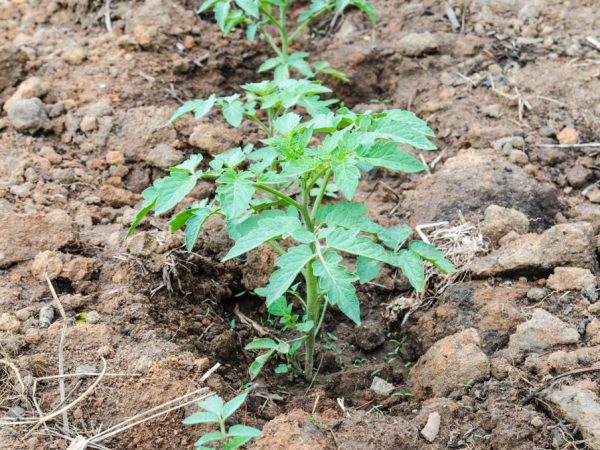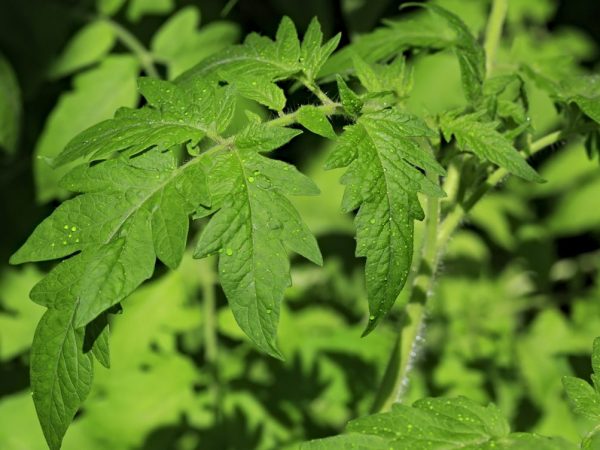Top dressing of tomatoes after planting
Growing tomatoes is a laborious process. To get vigorous, fertile bushes, it is important that the seedlings are fed with useful microelements. This problem is solved by feeding tomatoes after planting.

Top dressing of tomatoes after planting
You need to figure out how you can fertilize tomatoes, because the quality and quantity of the crop depends on the correct choice of fertilizers.
What microelements are needed for a culture
Top dressing of tomatoes after planting in the ground is just as important as proper planting of bushes, watering and treatment from diseases and pests.
How to feed tomatoes after planting in the ground? When planting seedlings in a greenhouse or in open ground, it is important to observe the highest quality conditions for growing plants. The bush needs to draw strength from the soil, but unfortunately, sometimes there are not enough minerals there. The most valuable substances for this culture are:
- Nitrogen. The role of this element is important for the development of both the bushes themselves and the fruits of the tomato. Photosynthesis does not take place without nitrogen. In addition, the lack of this element leads to the short stature of the bushes and to the accumulation of nitrates in the pulp of the fruit.
- Phosphorus. An important element for the formation of blooms and ovaries. It is not difficult to notice its lack. Most often, flowers and ovaries quickly crumble, which affects the crop yield.
- Potassium. It is important for the health of the roots, the condition of which affects the delivery of moisture and nutrients to all parts of the plant, therefore, with a lack of potassium, tomatoes often get sick, and their fruits do not grow large.
It is not necessary to know what other microelements tomatoes should receive: tomatoes are annual plants, so the lack of other substances will not significantly affect the quality of the grown crop. In addition, the seedlings receive such elements as iron, manganese and copper during preventive spraying from insects and pests.
If you feed the tomatoes after planting, the bushes will be healthy and strong, and the fruits will be large, juicy and healthy. But do not add them in excess: this negatively affects not only the tomato bushes, but also the fruits. Over-fertilization makes tomatoes tasteless.
Varieties of dressings
Without feeding the plant during its growing season, there is a risk of not getting the expected yield. You can fertilize tomatoes after planting, in front of it and during the flowering period. When planting seedlings in a greenhouse or in open ground, they are fed:
- organic fertilizers;
- mineral fertilizers;
- complex formulations.
The organic type is the most beneficial for the planted crop.
Organic
The question of how to feed tomatoes after planting in the ground is most often decided in favor of organic fertilizers. The following substances can be used to fertilize tomatoes:
- onion peel;
- baker's yeast;
- garlic water;
- bird droppings and cow dung;
- humus;
- wood ash and grass.
If cow manure or poultry manure is selected, before use, it is necessary to minimize the proportion of nitrogen compounds in poultry and cow manure, therefore, such fertilizers are most often diluted and infused.
Mineral fertilizers are also safe and effective. Such formulations can be purchased in specialized stores in the form of liquids, powders and tablets. Also, gardeners use wood ash for seedlings before and after planting, which effectively affects the development of bushes and the formation of high-quality tasty fruits.
How to fertilize

You can apply fertilizer in two ways
After you have decided how to fertilize the tomatoes, choose a feeding method. There are two ways to feed tomatoes after planting: outside the root (on a bush) and under the root.
Foliar type
The main method is fine dispersion. The nutrient composition that falls on the foliage of the plant is well absorbed by the culture. In addition, this is how the first feeding is carried out, the purpose of which is to strengthen young shoots and create favorable conditions for the appearance of flowering. In total, up to 4 sprays can be carried out per season.
The most popular fertilizer recipe, which is suitable for tomatoes grown both in the greenhouse and in the open field, is a solution of potassium permanganate with urea. To prepare it you will need:
- 10 liters of water;
- 1 g of potassium permanganate;
- 15 g of urea.
To preserve the health of the culture and to protect them from falling flowering, you can use spraying with the preparation "Ovary". An aqueous solution of boric acid is also suitable (1 tsp of the drug in a bucket of water).
Sub-root type
This fertilizer is used no earlier than 3 weeks after planting the seedlings.
A combination of organic substances and mineral fertilizers is used. In order for useful microelements to be better absorbed by plants, it is important to loosen the soil and cover it with mulch. So, the introduced compositions will more effectively affect the formation of ovaries and the subsequent growth of fruits.
Gardeners are increasingly trying to avoid chemicals used in fertilizers. A natural product is the safest and most effective.
Feeding stages
To properly feed the tomatoes after planting in the ground, you must follow the scheme:
- The first feeding of tomatoes after planting is intended to start the active growth of the bush. It is produced a week after disembarkation. In addition, the first procedure helps to form immunity against diseases and pests. The best option is to use foliar feeding with a solution of serum, iodine and water.
- The second feeding is carried out during the beginning of flowering. It is produced by watering plants. Popular recipe: 1 tbsp. l. "Superphosphate", 1 tbsp. l. Agricole Vegeta, 1 tsp potassium sulfate, 10 liters of water.
- The third procedure is necessary during the period of ovary formation. A solution is poured over the root, which includes 10 liters of water, 1 tbsp. le nitrofoski, 1 tbsp. l. sodium humate.
- The fourth fertilizer is applied 3-4 weeks after the third procedure. An aqueous solution of superphosphate (1 tsp of superphosphate per 10 l of water) is poured under the roots of the plants.
Other recommendations
- It is better to apply an insufficient amount of fertilizer than an excessive one.
- Fertilization of seedlings should be carried out only at temperatures above 15 ° C. At lower rates, the nutrients useful for tomatoes will not be absorbed.
- Fertilizing at the root is best in the evening.
- Foliar dressing is carried out in the morning, in calm weather.
- From the period of flowering and the formation of ovaries until the harvest, the use of pesticides is prohibited.
- Tomatoes are fed together with watering (root type) and pest treatment (foliar).
If the plant lacks nitrogen, a gray matt bloom forms on the leaves of the seedlings. If there is not enough phosphorus, part of the leaf plate turns purple, and if potassium, the edge of the leaves dries up. Copper deficiency causes late blight.
Conclusion
How to feed tomatoes after planting in a greenhouse or in open ground? You can add both specialized formulations purchased at hardware stores, and top dressing made by yourself. Tomatoes can be fertilized with poultry manure, cow dung, food waste, fermented milk products, etc. The main thing is to know the fertilizer recipe and the recommended dosage.


